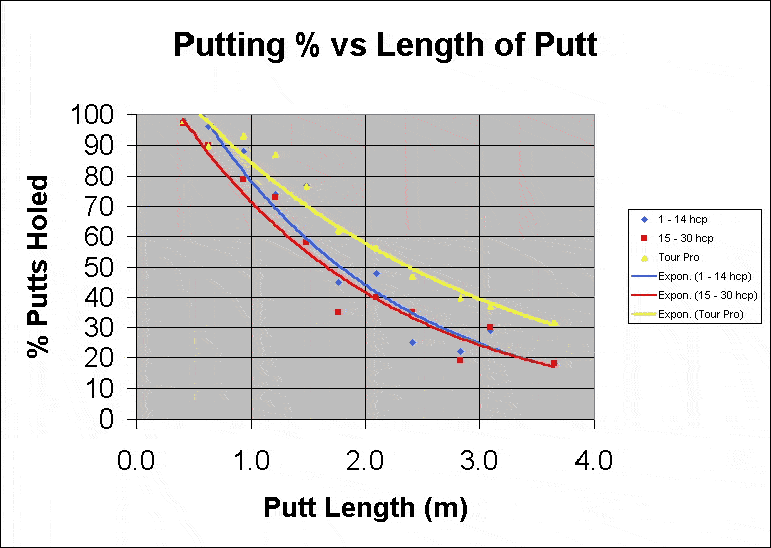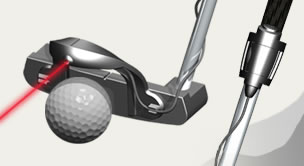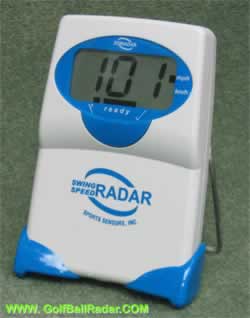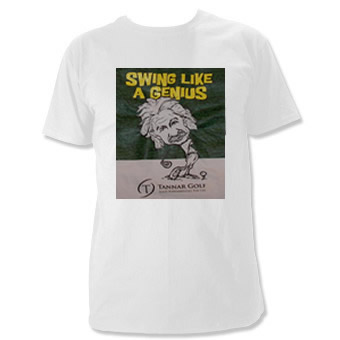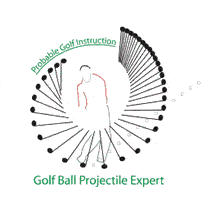
|
|
Sinking Short PuttsImproving the percentage of short putts you sink is a sure way of lowering your score and reducing your handicap. Why? Because you can't recover from a short putt. Missing by even a quarter inch is a miss, period. One can recover from missing a fairway or missing a green. But one cannot recover from missing a putt ... especially a short one. This page is all about how to sink more short putts. How can you improve your putting so that you can sink putts like the pros? How many 5-6 foot putts do you have each round, on average? If you don't know, keep track over your next 5 rounds. How many of them did you make? Now, if you sank just 20% more of those short putts, how many strokes would you save each round? Below is a graph of putts made for PGA Tour players and amateur handicap golfers. I've drawn in the best fit curves to match the real data. The putt distances are in metres. 1 metre = 3.3 ft so 3 metres is about 10 feet. Even PGA Tour players sink only 60% of their 6 foot putts, on average. When you're watching PGA golf, the leaders appear to sink almost all of them. But this is why they're leading; when they're putting their best.
One putt percentages don't give a true reflection of overall putting ability. Two players may sink 10% of their 15 footers, but one may 3 putt more of them. A better statistic is the average number of strokes taken from different distances. Here is a sample of stroke averages.
For myself, a 2 handicapper, my overall putting is better than the average 0 - 4 handicapper. My putting is one of the main reasons I remain a low handicapper. On 10, 6 foot putts, I'll take on average 14.2 strokes while a 26 handicapper will take 18.6 strokes; that's a 4.4 stroke difference. And remember, these are averages. One day I may take 18 strokes and on others I may take 10 strokes I encourage you to keep your putting statistics like I do above so that you can monitor your progress. It will give you an accurate measure of how you're doing. You can compare your stats to the table above. All you need to do on your scorecard for each round is record the length of each putt and how many strokes it took to hole out. Pace out your distances trying to take 3 foot paces. As you gain experience, you'll be able to estimate many putts without pacing I've written a little spreadsheet program to keep track of your putting statistics. Make a purchase of anything I sell from my site and I'll send it to you as a BONUS. Just send me an email after your purchase to let me know you'd like it. OR, you can purchase it for only $9.99.
Increasing the percentage of shot putts that you sink will make a world of difference to your score. What are the keys to improvement? To sink more putts, one must: 1. Read the amount of break, if any, that the putt will experience. Here is some guidance in dealing with these points. 1. Other than for fairly severe slopes, short putts won't have a lot of break. Golfers can learn how much putts break through trial and error experience. What also can help is being able to see slope in a green. Plumbing can give you a general idea about what way a putt will break. I have quantified the effect and developed a matrix to determine the amount of break given a plumb read. Read here for more information on reading greens by plumbing. 2. Aligning the putter face can be quite difficult, especially for the novice putter. The putter face angle is a greater determiner (about 85%) of initial ball direction than the path along which the putter swings, so it's essential that the golfer master the alignment of the face.
Misaligning your putter face by only 2 degrees will cause you to miss a:
The golf hole is only 4 inches wide. Many of your missed putts are likely due to misalignment of the putter face. Proper alignment can be learned. It can be mastered. You just need to know how you're aligning. You need a measuring tool to let you know. You need a Laser Putting Alignment System. Take a look at the Laser Putting Device that I use and consider getting one for yourself Order yours TODAY! Only $49.95 3. The proper speed to give the ball depends on the length of the putt. The longer the putt, the more speed the ball will need. The golfer needs to learn how long to make the stroke to give the ball the desired speed. It's on trial and error. It takes practice. It takes patience. Obviously, the ball needs enough speed to get to the hole. Too much speed, however, and the ball will not fall, even if it goes over the center of the hole. What is the optimum speed of the ball which increases the chance of it dropping?
A number of golf science researchers have investigated this problem (A.R. Penner and Geoff Mangum being two that come to mind). The optimum speed is one that is somewhere between the maximum speed of 1 and 3 above. Consider the 4 scenarios below (images from Geoff Mangum) depicting four different ball "entry speeds." The faster the entry speed, the less distance the ball falls before hitting the back of the cup. The highest possible entry speed for the ball to be captured by the hole (with the ball staying in the cup) is depicted in scenario 3. This is assuming the ball is online with the center of the cup, as in Direction 1 above. If off center, the ball has a shorter distance to travel to the back of the cup and thus the slower it must be moving for capture.
The physics and mathematics is pretty complex, but as a general guideline, the maximum speed for capture is about 1.6 m/s (if online with the center of the hole) which is comparable to the ball rotating at 12 revolution per second. On a medium speed green, if the ball missed the hole at this speed, it would roll about 4.4 feet past the hole. We don't want such long putts if we happen to miss. View this video of a "Holing Out Test" using a type of stimpmeter to measure the consistency of a green. I'd recommend a goal entry speed of about 0.8 m/s or 6 rev/s. If you miss, the ball will end up about 1 foot past the hole. And, if you're not online with the center of the hole, the ball can still get captured by the hole at this speed. You chances of capture are greater at even lower speeds, but at low speeds, the ball is much more susceptible to imperfections in the green which could throw the ball off line.
©Probable Golf Instruction, Ken Tannar 2001-2015. All Rights Reserved. Langley, B.C. V2Y 2G4 CanadaPhone: 604-309-7030 FAX: to fax, email an attachment probablegolf@yahoo.ca or golfexpert@probablegolfinstruction.com |
| GOLF ASSISTANTS |
|
Golf Trip Pairing CalculatorPlanning a golf trip with some friends/family? Trying to sort out the foursomes so people don't play too often with others? Order your ready made Spreadsheet. Type in the names, print out the groupings. Minimize repeat pairings.
Wind Caddy will advise you on aim, distance and club so that you can play the wind successfully. It takes the guess work out of club selection. New option to enter custom distances for each club. The algorithm will make a club suggestion accordingly. Use the right club in every condition!
|
|
|
| GOLF NEWS |
Golf Putting Green Reading Glasses |
| GOLF NEWSLETTER |
Statistics
·Putting
·Longest Golf Balls
·Games
·Handicap
·Scoring
·Shot Patterns
·Tournaments
·PGA Tour Stats
Pro Shop
·Ball Marker Engraved
·Books
·CDs & DVDs
·Green Reader
·Impact Labels
·Laser Rangefinder
·Longer Drives
·Products
·Teaching Aids
|
|
| GOLF POLL |
The 19th Hole
·Advertising
·Ask the Golf Expert
·Consultation/Litigation
·FAQs
·Golf Blog
·Golf Draws
·Links
·Science of Golf
·Tell a Friend
·Testimonials
·

Golf Ball Finder Glasses
Find all your errant golf balls and many more!
| GOLF TIPS |
How to play:
|
